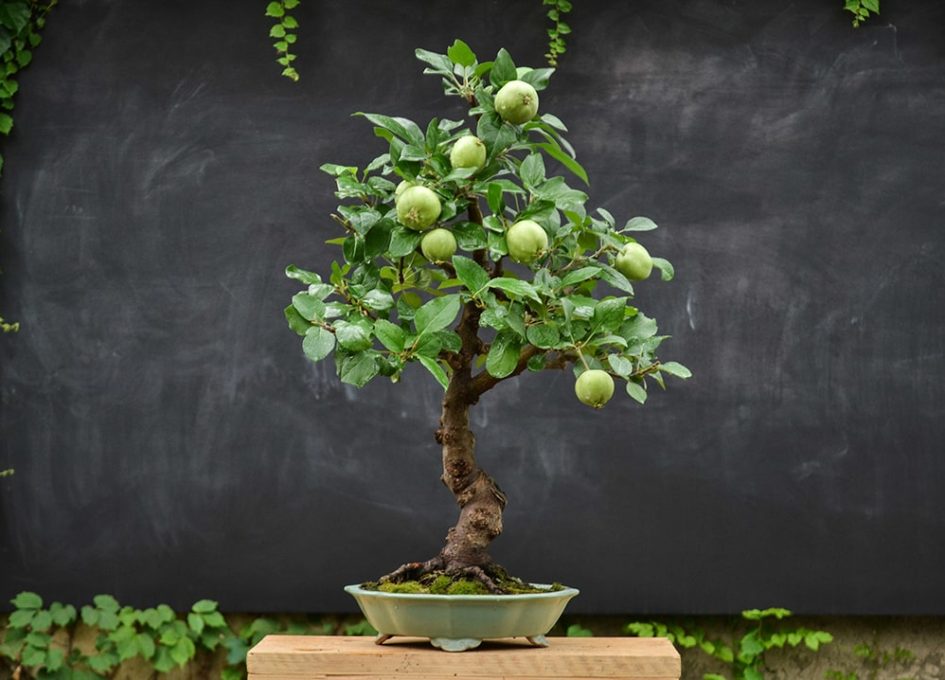Pruning technique
Deciduous Trees
Large branches should be cut as close to the trunk as possible, ensuring no small stubs are left. Special pruning shears are used for this purpose. These shears are designed to ensure that no stubs remain on the trunk after cutting.If such a tool is unavailable, cut the branch with regular secateurs and smooth the cutting surface with a sharp knife. The smoother and better the cutting surface, the faster the damaged area heals. When shortening a branch, the cut should be made near the bud or branching point.
Cutting near the bud is done just after the bud, very close to it. If the cut leaves part of the branch beyond the bud, that part of the branch will definitely dry out.
 Incorrect cutting and correct cutting location
Incorrect cutting and correct cutting location
Oblique cuts begin slightly above the base of the bud, on the opposite side of the bud's placement, and end at the tip of the bud. If the cut is made below the base of the bud, that bud will not develop.
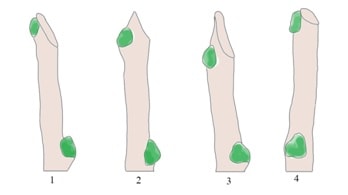 1, 2, 3 Incorrect cutting near the bud; 4 Correct cutting
1, 2, 3 Incorrect cutting near the bud; 4 Correct cutting
თუ ტოტი სისქეში სულ რამდენიმე მილიმეტრია, გადაჭერით ტოტის ზრდის მიმართულების პერპენდიკულარულად კვირტის დაბოლოებასთან
 Cutting a small diameter branch
Cutting a small diameter branch
Cutting near a branch. When cutting a branch, attention should be paid to the angle of the cut. The cut should not be made too steeply so that the remaining part of the branch is damaged. After the cut, no small stubs should remain.
Special attention should be paid to cutting tools when trimming branches. The tools must be clean, and most importantly, well-sharpened. A dull tool results in poor healing of the cut and may even lead to plant diseases. When cutting a branch, the "wound" should immediately be treated with garden ointment.
Coniferous plants require a slightly different approach to pruning. When forming deciduous trees during their dormant period, all large branches can be shortened to the desired length without leaving any second-order branches or developed buds. In spring, new growth will emerge from additional lateral or dormant buds. On conifers, after pruning in the same way, new shoots will not form and the plant will die. It should also be noted that most coniferous species grow much slower compared to deciduous trees. Because of this, one of the most difficult tasks for conifers is promoting new growth in the desired location.
During initial pruning, try to leave strong, well-developed branches on the plant whenever possible. It is recommended to cut each large branch in two stages: first, cut the branch so that 2-3 centimeters of the branch remain on the trunk. Only after one season should the remaining part of the branch be removed. Unlike deciduous trees, for some conifers, it is not necessary to treat the cut with garden paste. Sap will naturally ooze from the cut, protecting the plant from pests and fungal diseases.
Branch shortening occurs either at the branching point or where the needles begin to grow. Where the needles start growing, lateral buds are located. After cutting the tip of the branch, these buds begin to develop.
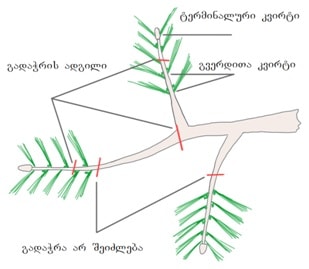
Pruning time
At the beginning stage, when starting the formation of bonsai, cutting and shortening large branches, as well as pruning smaller branches, occurs during the plant's resting period, either late in the autumn or early in the spring, before the buds open. During this time, the movement of energy reserves to the growth points is minimal, and the majority of the energy remains unused. Once the vegetative growth begins, this reserve is evenly distributed across all remaining growth points. As these points are reduced after pruning, more energy will be allocated to their growth. As a result, numerous strong shoots are produced.
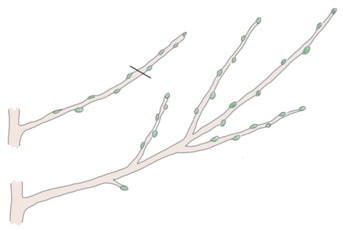 Development of a branch after cutting during the dormant period
Development of a branch after cutting during the dormant period
By the end of spring, almost the entire reserve is distributed. Therefore, pruning during this period results in weaker shoots. The distance between the nodes on new shoots is shorter, which is quite important for the formation of a miniature plant.
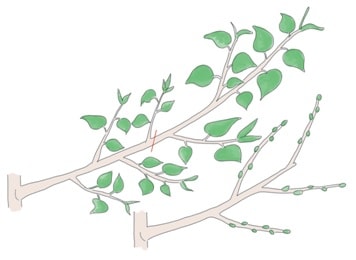 Development of a branch cut during the vegetative period
Development of a branch cut during the vegetative period
Therefore, for young plants whose formation is in the initial stages, it is preferable to prune them from late autumn to early spring, before the buds begin to open. If the plant is sufficiently developed and the branch structure meets your requirements, you can prune the plant at the end of spring.

